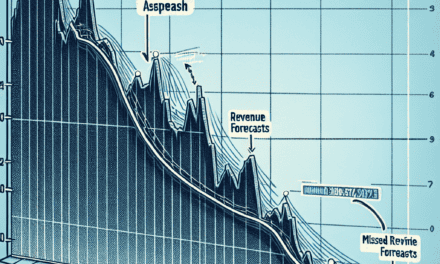“Guiding Markets, Securing Futures: Policymakers in Action”
Introduction
Policymakers Aim to Stabilize the Stock Market
In the ever-fluctuating world of finance, the stability of the stock market is a critical concern for both investors and governments. Policymakers, tasked with maintaining economic equilibrium, are increasingly focused on implementing strategies to stabilize stock markets amid global uncertainties. This involves a delicate balance of regulatory measures, fiscal policies, and international cooperation to mitigate volatility and foster investor confidence. As economic landscapes evolve, these efforts are crucial in ensuring that stock markets remain resilient, reflecting the underlying health of economies and supporting sustainable growth.
Strategies Policymakers Use to Stabilize the Stock Market
In the ever-fluctuating world of finance, the stability of the stock market is a critical concern for policymakers. The stock market’s health is not only a barometer of economic vitality but also a determinant of investor confidence and economic growth. Consequently, policymakers employ a variety of strategies to stabilize the stock market, ensuring it remains a reliable platform for investment and economic activity. One of the primary tools at their disposal is monetary policy, which involves the manipulation of interest rates and money supply to influence economic conditions. By adjusting interest rates, central banks can either encourage borrowing and investment or temper economic overheating. For instance, during periods of economic downturn, lowering interest rates can stimulate investment by making borrowing cheaper, thereby injecting liquidity into the market and boosting investor confidence. Conversely, in times of excessive market exuberance, raising interest rates can help cool down speculative bubbles, thus preventing potential market crashes.
In addition to monetary policy, fiscal policy plays a crucial role in stabilizing the stock market. Governments can influence economic activity through taxation and public spending. During economic slowdowns, increased government spending on infrastructure projects or social programs can create jobs and stimulate demand, indirectly supporting stock market stability. Similarly, tax cuts can increase disposable income for consumers and businesses, encouraging spending and investment. However, it is essential for policymakers to strike a balance, as excessive fiscal stimulus can lead to inflationary pressures, which may destabilize the market.
Moreover, regulatory measures are vital in maintaining market stability. Policymakers implement regulations to ensure transparency, prevent fraud, and protect investors. For example, the establishment of circuit breakers, which temporarily halt trading during significant market declines, can prevent panic selling and provide time for investors to reassess their positions. Additionally, stringent disclosure requirements and oversight of financial institutions help maintain investor trust and market integrity. By fostering a transparent and fair trading environment, these regulations contribute to a stable stock market.
Furthermore, international cooperation among policymakers is increasingly important in today’s interconnected global economy. Financial markets are no longer confined within national borders, and events in one country can have ripple effects worldwide. Therefore, coordination among international regulatory bodies and central banks is essential to address global financial challenges. For instance, during the 2008 financial crisis, coordinated efforts by central banks around the world to provide liquidity and stabilize financial systems were crucial in preventing a more severe global economic downturn.
Finally, communication strategies are an often-overlooked yet vital component of market stabilization efforts. Policymakers must effectively communicate their intentions and actions to the public and investors. Clear and transparent communication can help manage market expectations and reduce uncertainty, which is a significant driver of market volatility. By providing guidance on future policy directions and economic outlooks, policymakers can help anchor investor expectations and contribute to a more stable market environment.
In conclusion, the stabilization of the stock market is a multifaceted endeavor that requires a combination of monetary and fiscal policies, regulatory measures, international cooperation, and effective communication. Policymakers must remain vigilant and adaptable, as the financial landscape is continually evolving. By employing these strategies, they can help ensure that the stock market remains a stable and reliable engine of economic growth and prosperity.
The Role of Central Banks in Stock Market Stabilization
Central banks play a pivotal role in stabilizing stock markets, acting as both a guiding force and a safety net during periods of economic turbulence. As policymakers strive to maintain equilibrium in financial markets, their actions are often scrutinized for their immediate and long-term impacts. Central banks, through their monetary policy tools, have the capacity to influence investor confidence and market stability. By adjusting interest rates, engaging in open market operations, and implementing quantitative easing, they can either stimulate or cool down economic activity, thereby affecting stock market performance.
Interest rate adjustments are one of the most direct ways central banks influence the stock market. Lowering interest rates generally reduces the cost of borrowing, encouraging businesses to invest and expand, which can lead to higher corporate earnings and, consequently, rising stock prices. Conversely, raising interest rates can have a dampening effect, as higher borrowing costs may lead to reduced corporate profits and lower stock valuations. Thus, central banks must carefully calibrate interest rate changes to avoid triggering excessive market volatility.
In addition to interest rate policies, central banks engage in open market operations, buying or selling government securities to regulate the money supply. By purchasing securities, central banks inject liquidity into the financial system, which can boost stock prices by making more capital available for investment. On the other hand, selling securities can withdraw liquidity, potentially leading to a contraction in stock market activity. These operations are crucial for maintaining the delicate balance between fostering economic growth and preventing inflationary pressures.
Quantitative easing (QE) is another tool central banks employ to stabilize stock markets, particularly during times of severe economic distress. By purchasing large quantities of financial assets, central banks can lower long-term interest rates and increase the money supply, encouraging investment and consumption. This influx of liquidity can bolster stock markets by driving up asset prices and improving investor sentiment. However, the implementation of QE is not without its challenges, as it can lead to asset bubbles and increased risk-taking behavior among investors.
Moreover, central banks’ communication strategies are integral to their role in stock market stabilization. By providing clear guidance on future monetary policy actions, central banks can manage market expectations and reduce uncertainty. Forward guidance helps investors make informed decisions, thereby minimizing abrupt market reactions to policy changes. Effective communication can enhance the credibility of central banks, reinforcing their ability to influence market dynamics positively.
While central banks possess powerful tools to stabilize stock markets, their actions are not without limitations and potential drawbacks. The global interconnectedness of financial markets means that central bank policies in one country can have spillover effects on others, complicating the task of maintaining stability. Additionally, prolonged periods of low interest rates or extensive QE can lead to distortions in asset prices and financial imbalances, posing risks to long-term economic stability.
In conclusion, central banks are indispensable in the quest to stabilize stock markets, employing a range of monetary policy tools to influence economic conditions and investor behavior. Their ability to manage interest rates, conduct open market operations, and implement quantitative easing plays a crucial role in maintaining market equilibrium. However, the complexity of global financial systems and the potential for unintended consequences necessitate a careful and measured approach. As policymakers continue to navigate these challenges, the role of central banks in stock market stabilization remains a critical area of focus for ensuring economic resilience and growth.
Impact of Fiscal Policies on Stock Market Stability
In recent years, the interplay between fiscal policies and stock market stability has garnered significant attention from economists and policymakers alike. As global markets become increasingly interconnected, the ripple effects of fiscal decisions made by major economies can be felt worldwide. Consequently, understanding the impact of these policies on stock market stability is crucial for both investors and governments. Fiscal policies, which encompass government spending and taxation decisions, play a pivotal role in shaping economic conditions. When implemented effectively, they can stimulate economic growth, reduce unemployment, and maintain price stability. However, the challenge lies in striking the right balance, as overly expansionary or contractionary policies can lead to market volatility. For instance, excessive government spending may lead to inflationary pressures, while stringent austerity measures can stifle economic growth.
One of the primary ways fiscal policies influence stock market stability is through their impact on investor confidence. When governments announce fiscal measures aimed at boosting economic growth, such as infrastructure spending or tax cuts, investors often perceive these actions as positive signals. This optimism can lead to increased investment in equities, driving up stock prices. Conversely, announcements of tax hikes or spending cuts may be viewed as detrimental to economic growth, causing investors to become cautious and potentially leading to a sell-off in the stock market. Moreover, fiscal policies can affect corporate profitability, which in turn influences stock prices. For example, a reduction in corporate taxes can increase a company’s net income, making its stocks more attractive to investors. On the other hand, increased taxes or regulatory burdens can erode profit margins, leading to a decline in stock valuations.
In addition to direct impacts, fiscal policies can also have indirect effects on stock market stability through their influence on monetary policy. Central banks often adjust interest rates in response to fiscal measures to maintain economic equilibrium. For instance, if a government implements expansionary fiscal policies that risk overheating the economy, a central bank may raise interest rates to curb inflation. Higher interest rates can increase the cost of borrowing for companies, potentially dampening investment and affecting stock prices. Conversely, if fiscal policies are contractionary, central banks might lower interest rates to stimulate economic activity, which can have a positive effect on the stock market.
Furthermore, the global nature of today’s financial markets means that fiscal policies in one country can have far-reaching implications. For example, significant fiscal stimulus in a major economy like the United States can lead to increased demand for imports, benefiting exporting countries and potentially boosting their stock markets. Conversely, fiscal austerity in a large economy can reduce global demand, negatively impacting stock markets worldwide. Therefore, international coordination of fiscal policies is essential to ensure global market stability.
In conclusion, the impact of fiscal policies on stock market stability is multifaceted and complex. Policymakers must carefully consider the potential consequences of their decisions, not only on their domestic economies but also on the global financial system. By striking a balance between stimulating growth and maintaining fiscal discipline, governments can help foster a stable and predictable environment for investors. As the world continues to navigate economic uncertainties, the role of fiscal policies in ensuring stock market stability will remain a critical area of focus for policymakers and market participants alike.
Regulatory Measures to Prevent Stock Market Volatility
In recent years, the stock market has experienced significant fluctuations, prompting policymakers to explore regulatory measures aimed at stabilizing this vital component of the global economy. The volatility observed in the stock market can have far-reaching consequences, affecting not only investors but also the broader economic landscape. Consequently, regulatory bodies are increasingly focused on implementing strategies to mitigate these fluctuations and ensure a more stable financial environment.
One of the primary approaches being considered involves enhancing transparency within the market. By requiring companies to disclose more comprehensive and timely information, regulators aim to reduce uncertainty and speculation, which are often catalysts for volatility. Improved transparency can empower investors to make more informed decisions, thereby fostering a more stable market environment. Additionally, this approach can help to build trust between investors and corporations, further contributing to market stability.
Moreover, policymakers are examining the role of high-frequency trading (HFT) in exacerbating market volatility. HFT, characterized by the rapid execution of large volumes of trades, can lead to significant price swings within short periods. To address this, regulators are contemplating the introduction of measures such as transaction taxes or speed bumps, which would slow down trading and reduce the impact of HFT on market stability. By curbing the influence of these rapid trades, the market could experience fewer abrupt fluctuations, leading to a more predictable trading environment.
In addition to addressing HFT, there is a growing emphasis on strengthening the resilience of financial institutions. By ensuring that banks and other financial entities maintain adequate capital reserves, regulators aim to prevent systemic risks that could lead to market instability. This approach not only safeguards individual institutions but also enhances the overall robustness of the financial system. In turn, a more resilient financial sector can better withstand external shocks, thereby contributing to a more stable stock market.
Furthermore, international cooperation is becoming increasingly important in the quest to stabilize the stock market. Given the interconnected nature of global financial markets, volatility in one region can quickly spread to others. As a result, policymakers are advocating for greater collaboration among international regulatory bodies to harmonize rules and share information. By working together, countries can develop coordinated strategies to address market volatility, ensuring that measures taken in one jurisdiction do not inadvertently destabilize another.
In addition to these regulatory measures, there is a growing recognition of the importance of investor education in promoting market stability. By equipping investors with the knowledge and tools necessary to navigate the complexities of the stock market, regulators can help reduce the likelihood of panic-driven sell-offs that contribute to volatility. Educational initiatives can empower investors to adopt a long-term perspective, thereby reducing the impact of short-term market fluctuations.
In conclusion, as policymakers strive to stabilize the stock market, a multifaceted approach is essential. By enhancing transparency, addressing high-frequency trading, strengthening financial institutions, fostering international cooperation, and promoting investor education, regulators can create a more stable and resilient market environment. These efforts, while complex, are crucial in ensuring that the stock market continues to function as a reliable engine of economic growth and prosperity. As these measures are implemented, it is hoped that they will lead to a more predictable and secure financial landscape for investors and economies worldwide.
How Policymakers Respond to Stock Market Crises
In times of stock market crises, policymakers play a crucial role in stabilizing financial systems and restoring investor confidence. Their responses are often multifaceted, involving a combination of monetary policy adjustments, fiscal interventions, and regulatory measures. Understanding these responses requires an appreciation of the complex interplay between economic indicators, market sentiment, and policy tools.
Initially, central banks are typically at the forefront of responding to stock market turmoil. They often employ monetary policy tools to inject liquidity into the financial system. For instance, during a market downturn, central banks may lower interest rates to reduce the cost of borrowing, thereby encouraging investment and consumption. This approach aims to stimulate economic activity and counteract the negative effects of declining stock prices. Additionally, central banks might engage in open market operations, purchasing government securities to increase the money supply and further ease financial conditions.
Simultaneously, fiscal policy measures are also crucial in addressing stock market crises. Governments may implement stimulus packages designed to boost economic growth and support affected industries. These packages often include increased public spending on infrastructure projects, tax cuts, or direct financial assistance to businesses and individuals. By injecting capital into the economy, fiscal policies can help mitigate the adverse impacts of a stock market decline, fostering a more stable economic environment.
Moreover, regulatory bodies play a significant role in ensuring market stability during crises. They may introduce temporary measures to curb excessive volatility and protect investors. For example, regulators might impose restrictions on short selling, a practice that can exacerbate downward pressure on stock prices. By limiting such activities, they aim to prevent panic selling and restore a sense of order in the markets. Furthermore, regulatory agencies may enhance transparency requirements, compelling companies to provide more detailed financial disclosures. This increased transparency can help investors make informed decisions, thereby reducing uncertainty and stabilizing market conditions.
In addition to these immediate responses, policymakers often engage in long-term reforms to strengthen the resilience of financial systems. These reforms may include revising regulatory frameworks to address systemic risks and improve oversight of financial institutions. By enhancing the robustness of the financial system, policymakers aim to prevent future crises and ensure that markets can better withstand shocks.
It is important to note that the effectiveness of these policy responses depends on timely and coordinated action. Policymakers must work collaboratively, both domestically and internationally, to address the interconnected nature of global financial markets. International cooperation is particularly vital in preventing the spread of financial contagion across borders. By sharing information and aligning policy measures, countries can collectively stabilize markets and foster global economic stability.
In conclusion, policymakers employ a range of strategies to stabilize stock markets during crises. Through monetary policy adjustments, fiscal interventions, and regulatory measures, they aim to restore confidence and promote economic recovery. While immediate actions are essential in addressing the immediate impacts of market downturns, long-term reforms are equally important in building resilient financial systems. Ultimately, the success of these efforts hinges on timely, coordinated, and transparent actions that address both the symptoms and underlying causes of stock market crises.
The Influence of Monetary Policy on Stock Market Trends
Monetary policy plays a pivotal role in shaping stock market trends, as it directly influences economic conditions and investor sentiment. Central banks, through their monetary policy tools, have the power to affect interest rates, money supply, and overall economic stability, which in turn impacts stock market performance. In recent years, policymakers have increasingly focused on stabilizing the stock market, recognizing its importance as a barometer of economic health and a driver of wealth creation.
One of the primary ways monetary policy influences the stock market is through interest rate adjustments. When central banks lower interest rates, borrowing costs decrease, encouraging businesses to invest and expand. This can lead to higher corporate earnings, which often results in rising stock prices. Conversely, when interest rates are increased, borrowing becomes more expensive, potentially slowing down economic growth and negatively affecting stock prices. Therefore, central banks must carefully calibrate interest rate changes to avoid excessive market volatility.
In addition to interest rate policies, central banks also utilize quantitative easing (QE) as a tool to stabilize financial markets. By purchasing government securities and other financial assets, central banks inject liquidity into the economy, aiming to lower long-term interest rates and encourage investment. This influx of liquidity can boost stock prices by increasing demand for equities and improving investor confidence. However, the long-term effects of QE on the stock market remain a topic of debate among economists, as some argue that it may lead to asset bubbles and increased financial risk.
Moreover, the communication strategies of central banks significantly influence stock market trends. Forward guidance, a tool used to communicate future monetary policy intentions, helps manage investor expectations and reduce uncertainty. By providing clear and consistent messages about future policy actions, central banks can mitigate market volatility and foster a more stable investment environment. However, the effectiveness of forward guidance depends on the credibility and transparency of the central bank, as any perceived inconsistency can lead to market turbulence.
Furthermore, the global interconnectedness of financial markets means that monetary policy decisions in one country can have far-reaching effects on stock markets worldwide. For instance, when the U.S. Federal Reserve adjusts its monetary policy, it can influence capital flows and exchange rates in other countries, thereby affecting their stock markets. This interconnectedness underscores the importance of international coordination among central banks to ensure global financial stability.
In light of these considerations, policymakers face the challenging task of balancing economic growth with financial stability. While accommodative monetary policies can support stock market growth, they also carry the risk of inflation and financial imbalances. Therefore, central banks must remain vigilant and responsive to changing economic conditions, adjusting their policies as needed to maintain stability.
In conclusion, the influence of monetary policy on stock market trends is profound and multifaceted. Through interest rate adjustments, quantitative easing, and effective communication strategies, central banks aim to stabilize the stock market and foster a conducive environment for economic growth. However, the complexities of global financial markets and the potential risks associated with accommodative policies necessitate a careful and measured approach. As policymakers continue to navigate these challenges, their actions will undoubtedly shape the future trajectory of stock markets and the broader economy.
Case Studies: Successful Stock Market Stabilization by Policymakers
In recent years, the global stock market has experienced significant volatility, prompting policymakers to implement various strategies aimed at stabilization. These efforts have been crucial in maintaining investor confidence and ensuring the smooth functioning of financial markets. By examining successful case studies, we can gain valuable insights into the mechanisms and approaches that have proven effective in stabilizing stock markets during turbulent times.
One notable example of successful stock market stabilization occurred during the 2008 financial crisis. In response to the unprecedented market turmoil, the United States government, along with other global financial authorities, took decisive action to restore stability. The implementation of the Troubled Asset Relief Program (TARP) was a pivotal move. By injecting capital into banks and purchasing distressed assets, the program helped to shore up financial institutions and restore liquidity to the market. This intervention not only prevented a complete collapse of the financial system but also laid the groundwork for a gradual recovery.
Transitioning to another case, the European Central Bank (ECB) played a crucial role in stabilizing the Eurozone markets during the sovereign debt crisis. In 2012, the ECB introduced the Outright Monetary Transactions (OMT) program, which allowed for the purchase of government bonds from troubled Eurozone countries. This move was instrumental in alleviating investor fears and reducing borrowing costs for countries like Spain and Italy. The OMT program demonstrated the power of monetary policy in calming markets and underscored the importance of a coordinated response in addressing systemic risks.
Moreover, the Chinese government’s response to the 2015 stock market crash offers another instructive example. Faced with a sharp decline in stock prices, Chinese authorities implemented a series of measures to stabilize the market. These included halting initial public offerings, restricting short selling, and encouraging state-owned enterprises to buy back shares. Additionally, the government established a stabilization fund to support the market. These actions, while controversial, were effective in curbing the panic and restoring a degree of normalcy to the Chinese stock market.
Furthermore, the COVID-19 pandemic presented a unique challenge to global stock markets, necessitating swift and coordinated action from policymakers worldwide. Central banks, including the Federal Reserve and the ECB, implemented unprecedented monetary easing measures, such as slashing interest rates and launching large-scale asset purchase programs. These actions were complemented by fiscal stimulus packages from governments, aimed at supporting businesses and households. The rapid response helped to stabilize markets and prevent a deeper economic downturn, highlighting the importance of timely and decisive intervention.
In addition to these case studies, it is essential to recognize the role of regulatory reforms in enhancing market stability. Following the 2008 financial crisis, significant regulatory changes were introduced to strengthen the resilience of financial institutions and improve market transparency. The implementation of the Dodd-Frank Act in the United States and the Basel III framework globally are prime examples of such reforms. These measures have contributed to a more robust financial system, capable of withstanding future shocks.
In conclusion, the successful stabilization of stock markets by policymakers is a multifaceted endeavor that requires a combination of monetary, fiscal, and regulatory measures. By learning from past experiences, policymakers can better prepare for future challenges and ensure the continued stability of global financial markets. As these case studies illustrate, timely and coordinated actions are paramount in restoring investor confidence and safeguarding the integrity of the financial system.
Q&A
1. **What are policymakers doing to stabilize the stock market?**
Policymakers are implementing monetary and fiscal measures, such as adjusting interest rates, providing liquidity, and enacting stimulus packages to stabilize the stock market.
2. **Why is stock market stabilization important for policymakers?**
Stabilizing the stock market is crucial to maintain investor confidence, ensure economic stability, and prevent financial crises that can lead to broader economic downturns.
3. **How do interest rate adjustments affect the stock market?**
Lowering interest rates can stimulate economic activity by making borrowing cheaper, which can boost corporate profits and stock prices. Conversely, raising rates can slow down the economy and potentially decrease stock prices.
4. **What role do central banks play in stock market stabilization?**
Central banks play a key role by setting monetary policy, including interest rates and quantitative easing, to influence economic conditions and stabilize financial markets.
5. **How can fiscal policy contribute to stock market stability?**
Fiscal policy, such as government spending and tax cuts, can stimulate economic growth, increase consumer spending, and improve corporate earnings, which can positively impact the stock market.
6. **What are the risks of policymakers intervening in the stock market?**
Risks include creating asset bubbles, increasing national debt, and distorting market signals, which can lead to long-term economic imbalances.
7. **How do geopolitical events influence policymakers’ actions on the stock market?**
Geopolitical events can create uncertainty and volatility in the stock market, prompting policymakers to take actions such as diplomatic measures or economic sanctions to mitigate negative impacts.
Conclusion
Policymakers aiming to stabilize the stock market typically focus on implementing measures that enhance market confidence, reduce volatility, and ensure liquidity. These measures can include adjusting interest rates, modifying fiscal policies, and enacting regulatory reforms to improve transparency and investor protection. By fostering a stable economic environment, policymakers seek to mitigate the impact of external shocks and speculative activities that can lead to market instability. Ultimately, the goal is to create a resilient financial system that supports sustainable economic growth and protects investors’ interests.





